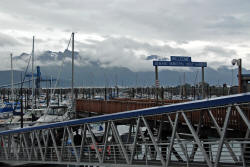
Seward Boat Harbor:
clouds, wind, and cold weather indicate it will be a 'rough' ride
ahead (but still well worth it)!!! |
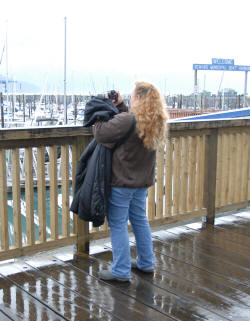
Dolly, waiting to board |
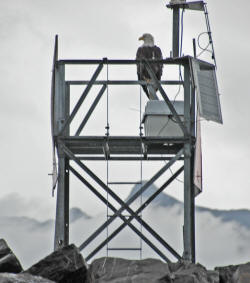
eagle lifeguard? . . on way out of harbor |
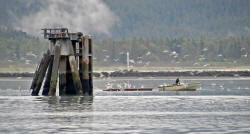
This fishing guy is on his way back in, with company following |
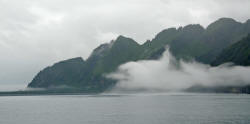
At the tip of the Kenai Peninsula lies a land where the ice age
still lingers. In Kenai Fjords, glaciers, earthquakes, and ocean
storms are the architects. Ice worms, bears and whales make their
home in this land of constant change. Native Alutiiq used these
resources to nurture a life entwined with the sea. * |
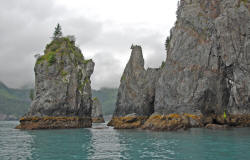
. . . many caves and coves in these waters |
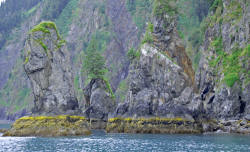 |
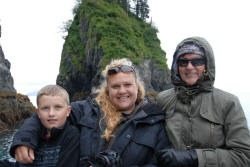
Travis, Dolly and Suzi. Can you tell which two live in Alaska, and
who is from Florida? |
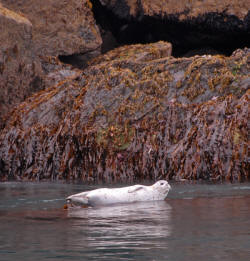
Harbor Seal:
Only a wrinkling or opening in the skin denotes external ears. The
fore flippers are small and placed far forward with five long,
clawed digits. The longer hind flippers are used for locomotion
under water but cannot be turned forward as with sea lions. Harbor
seals wriggle and hunch to travel on land. Because this is
laborious, they will roll or slide whenever possible. The average
adult found in Alaska waters is just over five feet in length and
weighs about 190 pounds. * |
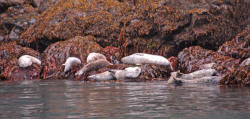
Harbor seals wriggle and hunch to travel on land. Because this is
laborious, they will roll or slide whenever possible. * |
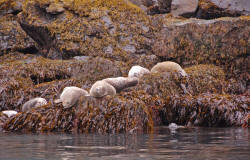
Pacific harbor seals are opportunistic, eating a variety of
schooling fish, bottom fish, crustaceans, and squid. They consume up
to eight percent of their body weight in food per day. The ice flows
from the tidewater glaciers and sharp drop-offs from rocky shores of
the surrounding fjords offer access to various prey items and refuge
from predation by marine predators. Low profile on the water makes
them less visible to terrestrial predators. *
|
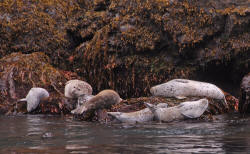 |
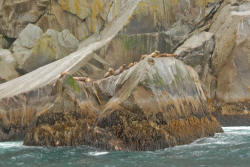
Steller Sea Lions
Female sea lions average seven feet in length and about 600 pounds.
Male sea lions, slightly longer at nine feet, weigh more than twice
as much as females at an average of 1,500 pounds with “beach
masters” reaching up to 2,400 pounds. Steller sea lions do not
migrate, but individuals disperse widely outside of breeding season.
* |
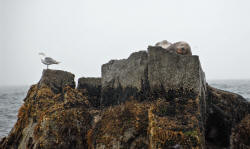
"Hey gull, please wake me if you see any danger" |
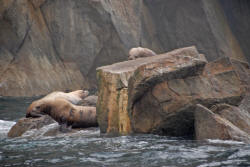
Steller Sea Lions are branded to
observe as they wean, mature, travel and return to breed in a
rookery. Their numbers decreased rapidly in the late 1980s. |

Dall porpoises were darting rapidly
criss-crossing the bow of the ship - they can travl up to 50
miles-per-hour - which is why I did not get a picture of one, other
than the splashing!! |
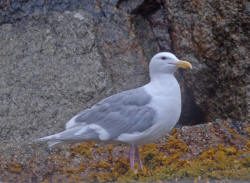
Glaucous Winged Gull
(I can't believe I travelled all the way to Alaska and am
photographing a gull! But this is different from gulls in
Florida, so it is a good thing. Besides, he is posing so nicely for
me.) |
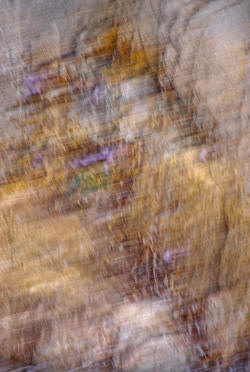
Abstract Art, achieved when using a long telephoto lens while
standing on a boat rocking in five-foot swells, on a windy and rainy
day!! |
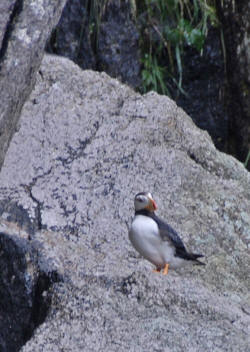
xx |
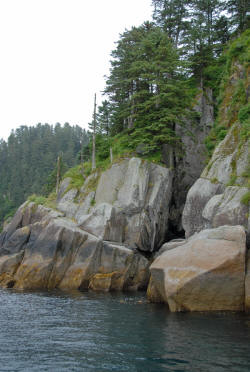
|
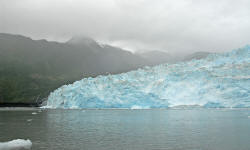
Kenai Fjords National Park sits at the edge of the North Pacific
Ocean, where storm patterns develop and feed a land of ice. The
Harding Icefield crowns the park and is the source of at least
38 glaciers that flow over the land sculpting as they go. These
gigantic rivers of ice have shaped the terrain and are now receding
to reveal their work. * |
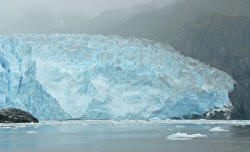
The Harding Icefield accumulates 400-800 inches
of snow each year. It takes between
30-50 years for that snow to compress into glacial ice.* |
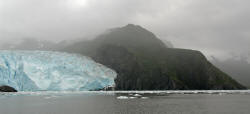
|
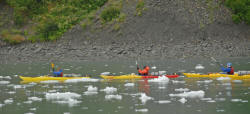
brrrr . . .
do they know there is ice all around them? |
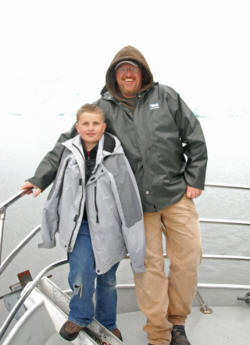
Travis and Jeff |
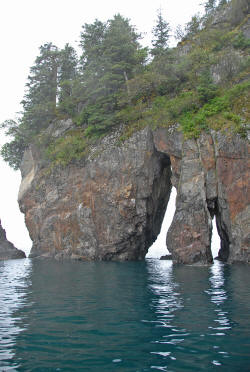 |

|
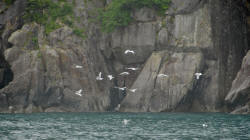 |
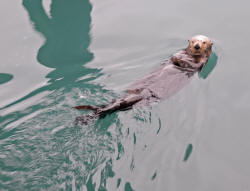
sooooo cute!!
Sea otters are the largest members of the weasel family, and are
related to skunks, wolverines, weasels, badgers, martens, and minks.
Though they can dive to depths of 250 feet and more, they usually
dive between five and 60 feet in search of food. Their diet includes
clams, mussels, crabs, and sea urchins. Otter teeth are well
designed for a diet of shellfish because the lower front teeth act
as a scoop for cleaning out shells, while flat, sturdy molars crush
the shells of most prey species. A tough shell presents no problem
for a sea otter and they will use rocks as tools to open up a
difficult shell.* |
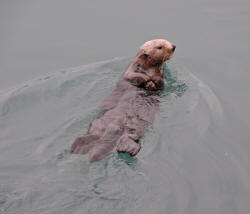
The sea otter lacks the blubber, and consequently size, that all
other warm-blooded sea animals need to stay warm. In place of
blubber, sea otters have a dense coat of luxuriously soft fur. Made
up of a dark brown underfur with sparse guard hairs of lighter brown
or silver color, the sea otter’s coat consists of 600,000 to
1,000,000 hairs per square inch and must be kept immaculately clean
to keep the animal warm. *
(I want to know who counted these hairs!)
|
* http://www.nps.gov/kefj/index.htm - source of info about Kenai Fjords
National Park